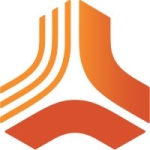What is our primary use case?
Our primary use for DOORS is that we implement this product for our customers and build-out customized components.
How has it helped my organization?
This product improved our organization because it has given us a means for improving the way we proceed through solution development.
What is most valuable?
One of the most valuable features of the program is the usability. It is really simple to use and its logic, look and feel are familiar to most customers. Let's say it is more of an old-fashioned interface design. If you look at the software, you will notice that the layout is similar to the old Microsoft Windows Explorer. This is helpful to customers who have long-term experience because the look and feel is something they remember from the structure of Explorer and they find it familiar when they go to use DOORS.
There are several other features in the product that are valuable to users and to us. These features would have to do with the traceability and the possibilities for customization of the RP (Relying Party). This is important because several of our clients run an awful lot of customizations.
In the past, we communicated customization needs to Telelogic and IBM through huge customer meetings like conventions, but nothing happened. That was when we added our engineering offices and started our business using customization tools. The clients who can't find what they need come to me now and ask if we could please develop tools like so-and-so (whatever company and functionality). We make it for them and we make it better with customizations — specific to their purposes. As a tiny, small engineering office we often get called for special solutions, for special company needs, which formerly Telelogic and now IBM was not willing to do for the customer. This is a big reason why DOORS is valuable for us and has helped us make our business.
What needs improvement?
What could make sense for this product is to improve is to develop a more efficient way to import and export documents from Office 365 like Excel, or Word and the other applications in this suite. Maybe, if possible, add a PDF document export or something like that. There are quite a few single steps that you have to take separately at the moment to make this happen. The parts are already implemented, but there could be a much more unified and efficient way to get that done. Again this is a repeated request from users and nothing has been done to implement it.
What I would like to see is in the product is that eventually, IBM will implement additional software solutions for integration. There is one that I know of that used to have the name RPE. It stands for Rational Publishing Engine. I think it is a tool that should be implemented in DOORS because it belongs to IBM after they purchased Rational Software. With this integration, we would have a much better way to actually import and export between Word or other Office documents.
On another side, it would be good to also see them integrate the GC (Garbage Collector) trace tool. It is a logical requirements engineering tool that would enhance some capabilities. It could be a specialty add-on but the integration needs to be there. This product is owned by IBM because formerly it belonged to Telelogic as well. It would be good for IBM and the users of these tools to have these solutions implemented in DOORS.
For how long have I used the solution?
I have been working with this product since Version 0.1. More than 20 years.
What do I think about the stability of the solution?
The stability is quite nice at this point. After these last few major versions, they have made significant improvement and it is very stable.
What do I think about the scalability of the solution?
From my side, scalability is okay so far. I have not had any bad experiences in our own use or with clients.
Our clients who use IBM Rational DOORS are usually large, enterprise companies, like airline industry companies, like Siemens, we work with Audi, Mercedes, and BMW. So we are not usually talking about small companies. But they are not all alike and we have clients of all sizes.
How are customer service and support?
In the past, I had a reason to contact IBM technical support, but I wasn't impressed. It was a lousy service. There is no question the technical support can be improved. It might not be a bad idea. The funny thing is that since IBM took over Telelogic and some of the guys from Telelogic have been moved over to IBM. If you get the ones who still work for Telelogic, you get fine and proper service and resolutions. But if you do not have the luck to reach one of the Telelogic people and you reach one of the ordinary IBM people, it is the worst case and you probably will not get what you need.
How would you rate customer service and support?
Which solution did I use previously and why did I switch?
Before we used IBM Rational DOORS, we just used Word and Excel to create our solutions.
How was the initial setup?
The initial setup is easy. The deployment usually takes a couple of weeks.
In the deployment process, there are between three to seven people involved depending on the project.
It is not simple to answer how many people are involved in the maintenance because we have decided to divide the way we look at supporting clients and products into different levels. Our support services have three levels now because all these different levels need different information about the tool in-depth to be able to use it properly for their purposes. If we do not provide them the information about the tool in-depth, we would not be providing proper support. In general, we have about six people providing the maintenance services.
What about the implementation team?
We do all of our own implementations.
What's my experience with pricing, setup cost, and licensing?
All my clients are running under a special agreement using a client-server version of the DOORS product where they get a discount on the product and then only pay maintenance. They pay the maintenance on a yearly basis. They are mostly huge companies and this is partly how they were able to get this special agreement. It works well for them because we have informed the clients how they could reduce their maintenance costs.
Which other solutions did I evaluate?
Our evaluations are ongoing. As an independent requirement engineer and system engineer, I'm running my own engineering office. From time-to-time, I have a client that asks me for information about other tools. But most of them still use DOORS or some other classic tool which has grown up through the .Net generation. So we do the research, but the research is more often to propose something to our customers if they are interested in doing something different and more modern.
We do not have any shortlist of other possible solutions at this stage because it may require changing operating systems. It's quite different if you compare both DOS and the next generation. I am still trying to figure out what is the best way to move forward. At the moment, I'm not really satisfied with the technology that is working with DOS next generation.
I get the idea behind the viewpoint from IBM, especially if you understand the focus on the newer, improved platform. It makes sense. But for established companies that have hundreds or thousands of documents in a classic DOS database, it is not as simple as the IBM company thought to populate the next generation. Especially in a technical company, we need one more serious tool and with some evolved features. When that happens, it will be okay. But a total switch from what they were doing is not what most companies are looking for. In my impression, it is not important to have a lot of tools for the same discipline. I think it would be more worthwhile to get one nice mature tool which suits all the interests and at the end of the day. So far it does not exist.
But by the same token, what we have to take in account is it doesn't matter if a product is made by a company called IBM or whichever company it is, we have to take care about the philosophy as it is only by having better tools that we have better success in a project. I'm not an engineer who is against all new technologies, but at the moment my impression about the American leadership and about the software technology — the current direction is frightening.
I think it is now time to think more about what direction the American software companies are taking us in. It may not be the right way or the best way to see the future of the computing world. I have heard managing directors say, "We have to find other solutions at the moment. This software we get is from America and we are not willing to accept this leadership and direction at the moment.
What other advice do I have?
What we actually have learned — or even maybe accepted and are comfortable with is now — is that for the user projects work best and most efficiently, it is absolutely nicer to work in a more structured way. This product helps order our projects. Because of what the tool does, we have a way to document the bare base engineering. What we did in the past, before DOORS, we all used Word and maybe Excel in our offices to set up our specifications for the product. In DOORS, we can now work in a different way. There are very nice features that help to structure your documents, to link your documents, and make a different analysis, test your approach and see it better. There were no tools like this in Word and Excel.
You also have the possibility to re-use things. It is quite nice to use a tool that allows you to use all your experience from a technical point of view and create the solutions in one data source and one tool and use components you create for various other projects as well.
On a scale from one to ten where one is the worst and ten is the best, I would rate IBM Rational DOORS as an eight-out-of-ten.
Which deployment model are you using for this solution?
On-premises
If public cloud, private cloud, or hybrid cloud, which cloud provider do you use?
Other
Disclosure: My company has a business relationship with this vendor other than being a customer. Partner
















